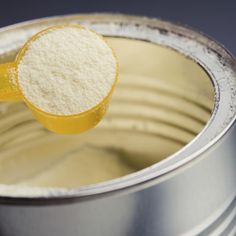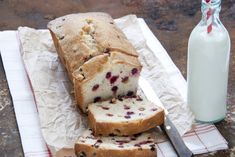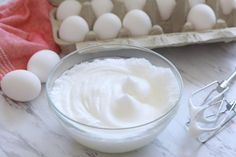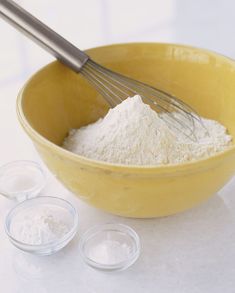Most Suitable Baking Powder Substitutes

Have you ever prepared cookies or a cake that came out flat and dense? Or maybe your pancakes didn’t rise sufficiently and are a little tougher than normal. Perhaps you forgot to add the baking powder, or you added too little. Or perhaps your baking powder is out of date.
The only thing that counts is that baking powder is a crucial rising agent. It is used in baked products such as pancakes, muffins, pastries, cakes, quick bread, and biscuits to give them a fluffy and light texture.But what if you don’t have any baking powder on hand? Is it possible to swap baking powder? If you don’t have baking powder, you may use baking soda combined with lemon, vinegar, molasses, sour milk, buttermilk, plain yogurt, cream of tartar, or any of the other ingredients listed below.
Baking Powder Substitutes
Baking powder includes baking soda as an ingredient. As a result, it is the greatest replacement you may employ. However, it must be combined with specific acidic components.
This allows the baked items to rise and have a lovely soft texture. The baking powder replacements listed below work just as well as baking powder and will save your recipe.
Baking soda and cream of tartar

Cream of tartar, a byproduct of winemaking created in barrels, is the acidic component in baking powder. It is used to stabilize eggs and whipped cream and prevent sugar crystallization in icings, frostings, and syrups. It is also used as a cleaning product.
Cream of tartar is combined with baking soda when used as a replacement for baking powder. Replace one teaspoon of baking powder, use 1/4 teaspoon baking soda, and 1/2 teaspoon cream of tartar.
Baking soda and buttermilk
This fermented milk product is another fantastic baking powder option. It has the thick texture and sour flavor of plain yogurt.
Buttermilk, which we purchase nowadays, is created like yogurt by adding bacteria cultures to pasteurized milk and ferment. Fermentation converts milk sugars into lactic acid, which is helpful in baking when combined with baking soda.
However, this was not how buttermilk was traditionally manufactured. It was prepared from the liquids leftover during butter churning. It had a luscious creamy texture and a somewhat sweet-sour flavor.
When buttermilk is used to replace baking powder, it is combined with baking soda. Twelve cups buttermilk and 14 teaspoon baking soda are substituted for one baking powder. If you use this alternative, you must lower the other liquids in the recipe.
Baking soda and plain yogurt
Plain yogurt is made from fermented milk as well. It is mostly composed of cow’s milk. Other milk, such as goat, sheep, buffalo, and plant milk, are utilized. Plain yogurt has a smooth and creamy texture and a sour flavor and can be used in baking powder.
To replace one teaspoon of baking powder, combine 12 plain yogurt and 14 teaspoons of baking soda. Remember to minimize the number of liquids in the recipe so that the mixture does not become excessively runny.
Baking soda and sour milk

Sour milk can also be used in place of baking powder. It is just fermented milk containing lactic acid needed to activate the baking soda. However, before using your sour milk, be sure it is not spoilt. It will have a strange curdled texture, yellowish hue, and terrible odor if it has rotted. Therefore it is best to discard it.
If you have milk at home, you may quickly produce sour milk. Add 1 cup of milk and one tablespoon of lemon juice or one tablespoon of vinegar if you don’t have lemon juice. Let it rest for 10 minutes after stirring.
Substitute 12 cups of soured milk with 14 teaspoon baking soda for one teaspoon baking powder. You’ll need to adjust the liquids in your recipe to account for the sour milk (1/2 cup).
Baking soda and molasses
Molasses is a delicious, dark-colored byproduct of sugar production. It is mainly used to flavor and sweeten dishes. The pH of molasses is acidic. As a result, it can be used in place of baking powder.
14 cup molasses and 14 teaspoon baking soda can be used in 1 teaspoon baking powder. Molasses contains a lot of sugar. As a result, you will need to reduce the sugar quantity and the level of other liquids in the recipe.
Baking soda and lemon juice
If you want a baked item with a zesty taste, lemon juice is a great baking powder substitution. When combined with baking soda, it has a significant acid level and behaves similarly to baking powder. To replace one teaspoon of baking powder, combine 14 teaspoon baking soda and 12 teaspoon lemon juice.
Baking soda and orange juice
Lemon juice has higher acidity than orange juice. However, if you have oranges on hand and don’t mind the orange taste in your cuisine, you may use it in place of baking powder. To replace one teaspoon of baking powder, use 12 orange juice and 14 baking soda.
Baking soda and vinegar
Vinegar is manufactured by fermenting sugars from grapes, fruits, cereals, alcoholic beverages, and acid. That is, there are several vinegar varieties to pick from.
It is used in baking, cooking, and cleaning. Baking powder can be replaced with any vinegar. However, because of its neutral flavor, white vinegar works best.
Swap 12 teaspoons vinegar for 14 teaspoon baking soda for one teaspoon baking powder and save your recipe.
Whipped egg whites

Whipped egg whites are used in several dishes to give them a light, airy texture and volume, such as cakes, pancakes, and meringues.
If your recipe calls for eggs, but you don’t have baking powder, beat the egg whites until they form a foam. Then whip them to form soft peaks by increasing the speed. Put the other ingredients from your recipe and gradually fold in the beaten egg whites.
Bubbles occur when egg whites are whipped. The bubbles function as baking powder, raising the batter. However, this baking powder alternative is only appropriate for recipes that call for eggs.
Self-rising flour
Baking powder, all-purpose flour, and salt are all ingredients in self-rising flour. As a result, if you don’t have baking powder or baking soda, use one of the alternative replacements indicated throughout this page.
Alternatively, use self-rising flour for ordinary flour and the remaining ingredients except for the salt, baking powder, or baking soda.
Club soda
Club soda includes little baking soda or sodium bicarbonate. As a result, you may use it in dishes that don’t require much rising time, such as pancakes.
If you don’t have any other solution, you can use them in baking powder. Be prepared, though, for flatter baked items. When using club soda, combine it quickly with the other components for the best results.
If you’re substituting club soda, don’t use the leftover liquids from your recipe. Otherwise, the carbon dioxide bubbles will dissipate quickly. Replace the other liquids in your recipe with the equivalent quantity of club soda.
Yeast
Yeast is a single-celled microorganism. It decomposes sugars and starches to produce carbon dioxide, which causes baked products to rise and ethanol-alcohol to evaporate (don’t panic, the alcohol evaporates when heated).
Yeast is the most ancient rising agent used in bread and other baked foods. Two yeast forms are used in baking: fresh yeast and dried yeast.
Warm water and sugar are used to activate dry yeast. It is added to the mixture once it has risen. Yeast is generally utilized in the production of bread and rolls. If you don’t have any other choices, use them in biscuits, pound cakes, pastries, or other baked items. One teaspoon yeast equals one teaspoon baking powder.
Sourdough
Wheat flour and water are used to make sourdough starters. The dough is made using natural yeast derived from the environment. When fermented, it may be used to make bread, muffins, and cakes.
Making a sourdough starter takes five days. After that, it must be maintained or fed with water and flour. It can be used in place of baking powder. It must, however, be made five days before usage.
So, if you can create it, you’ll always have a clean slate for your baked products. They do, however, take twice as long to rise as when baked using yeast or baking powder. One cup sourdough starter equals two tablespoons baking powder.
Air and steam
Physical rising agents include air and steam. When sugar and butter (or other solid fat) are mixed, air enters the mixture and enables it to rise when baking. When eggs or cream are beaten, the same thing happens.
The combination contains water, which evaporates in the oven, creating steam and increasing the volume of the baked foods. Puff and choux pastry are two examples.
Homemade substitute for baking powder

Only three components are required to make homemade baking powder. To preserve the baking powder, gather two teaspoons of cream of tartar, one teaspoon baking soda, and one teaspoon corn starch. Put them all together in a container.
Additional Information about Baking Powder
Baking powder’s main constituents are acid salt (cream of tartar), alkaline powder (baking soda), and neutral starch. Baking powder, as a result, contains baking soda.
The baking powder’s rising action is caused by acid salt and alkaline powder. At the same time, the starch is being added to absorb moisture from the powder and prevent the interaction between the alkaline powder and acid salt from occurring while the powder is being kept.
Corn and potato starch are the most often utilized starches in baking powder manufacturing. When water or another liquid is added to the combination, the alkaline powder and acid salt react. Carbon dioxide gas is released, causing bubbles to form inside the batter.
When the batter is cooked, the bubbles expand, producing air pockets that impact the texture of the baked item. Smaller air pockets have a softer and smoother feel, whereas more oversized air pockets have a coarser texture.
There are two kinds of baking powder available on the market. Baking powder has single and double actions.
There is only one acid in single-action baking powder. When the liquid is added to the mixture, it only responds once. In contrast, double-acting baking powder contains two types of acids.
When the liquid is introduced, one acid reacts. When the mixture is heated, the second acid reacts.
When using single-acting baking powder, you must act quickly and place the mixture in the oven as soon as feasible.
Double-acting baking powder is often used in baking and is available in shops. Baking powder with a single action is better suited for commercial use.
FAQs
What may I use in place of 1 tablespoon of baking powder?
One teaspoon baking soda combined with two teaspoons cream of tartar can be used in place of 1 tablespoon baking powder.
Can baking soda be substituted for baking powder?
Baking soda can be substituted for baking powder. However, you will need to include some acidic components, such as a cream of tartar or lemon juice.
What happens if no baking powder is used?
Your baked goods will not rise and be flat and dense without baking powder.











